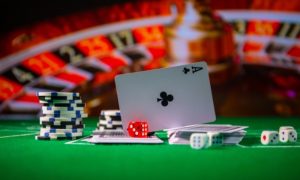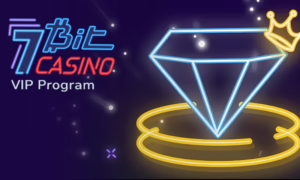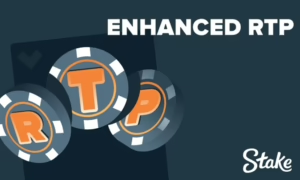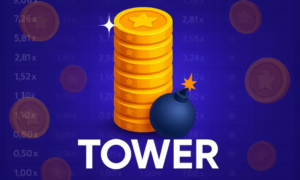Statistics: A Basic Look At Probability, Streaks, And House Edge
We explore some simple concepts that will help us understand how probability works, how that affects house edge, and how some people can experience seemingly impossible wins, using the simplest possible betting game: head or tails.

There is nothing better than being on a roll. You spin and spin, and you can’t stop winning. That is a dream-like situation! A recent article about a town that births only girls got us thinking about this. Of course, being on a roll doesn’t last forever; these streaks also have a logical explanation. Therefore, we decided to explore some simple concepts that will help us understand how probability works, how that affects house edge, and how some people can experience seemingly impossible wins. To do so we will use the simplest possible betting game: a game of head or tails.
Heads or Tails: Statistics and Probability
To start, let’s say a casino takes a bet of 1 for every flip of the coin, and pays out 1 for every time it falls on head (H), and collects the bet of 1 every time it falls on tails (T). In this case the house edge would be 0%, because there is an equal chance that it will win or lose the same amount. Over time bets even out to 0 gains. Compare this with the roll of a single 6 face die where the house takes a bet of 1 for every role, but only pays 1 back when the roll lands on 1 or 2 (2 out of 6 faces). In this case the house wins on 4 out of every 6 chances and has an edge of 33%.
Back to our heads and tails. Let’s look at what happens over time. When there is one roll there is a 50/50 chance that the house will win or lose. With every following roll there is the same chance, 50/50, that the house will win or lose on that particular roll. Those are the statistics. However, the probability of a sequence of rolls in which the house wins or loses changes.
Flipping a Coin for House Edge
Let’s look at two flips, which give us 4 possible scenarios:
Each possible scenario has the same probability of occurring: ½ * ½ = ¼. In this scenario, there are 2 cases in which the house neither wins nor loses, one in which it loses 2 and one in which it wins 2. So hypothetically, even though the house has 0% edge, there is a 25% chance it loses, and 25% chance it wins.
| Flip 1 | Flip 2 | House Win | House Loss | Overall |
|---|---|---|---|---|
| H | H | 0 | 2 | -2 |
| H | T | 1 | 1 | 0 |
| T | H | 1 | 1 | 0 |
| T | T | 2 | 0 | 2 |

Now extend this to four rolls. These 16 scenarios have an equal probability of occurring: ½ * ½ * ½ * ½ = 1/16. Here we have 6 cases where the house ties with the player, 5 cases where the house wins (four cases it wins 2, one case it wins 4) and 5 where it loses (four cases it loses 2, one case it loses 4).
| Flip 1 | Flip 2 | Flip 3 | Flip 4 | House Win | House Loss | Overall |
|---|---|---|---|---|---|---|
| H | H | H | H | 0 | 4 | -4 |
| H | H | H | T | 1 | 3 | -2 |
| H | H | T | H | 1 | 3 | -2 |
| H | H | T | T | 2 | 2 | 0 |
| H | T | H | H | 1 | 3 | -2 |
| H | T | H | T | 2 | 2 | 0 |
| H | T | T | H | 2 | 2 | 0 |
| H | T | T | H | 2 | 2 | 0 |
| H | T | T | T | 3 | 1 | 2 |
| T | H | H | H | 1 | 3 | 2 |
| T | H | H | T | 2 | 2 | 0 |
| T | H | T | H | 2 | 2 | 0 |
| T | H | T | T | 3 | 1 | 2 |
| T | T | H | H | 2 | 2 | 0 |
| T | T | H | T | 3 | 1 | 2 |
| T | T | T | H | 3 | 1 | 2 |
| T | T | T | T | 4 | 0 | 4 |

Being on a Roll: The Math Behind Your Hot Streak
As you can see over the long run it evens out – with infinite flips of the coin there will always be an equal amount of flips where the house won and lost and will have 0 gains or losses.
It I also easy to see how someone can be on a roll or a “hot streak.” There is always a possibility that someone can catch a series of straight heads – in our specific examples there is a 25% chance of that happening in a game of 2 flips, and a 6.25% chance of that happening in a game of 4 flips.
Now let’s look at what happens when the house tries to improve its odds of winning by changing the payout (this is relevant for the case of Blackjack math). For this scenario, instead of the house paying 1:1 for every bet made, imagine the house pays 0.8.
In the simplest case of a 2-flip game, there is still a ¼ chance of each scenario happening, but with the different payout scheme, the house will turn a profit in ¾ of the scenarios as you can see below:
| Flip 1 | Flip 2 | House Win | House Loss | Overall |
|---|---|---|---|---|
| H | H | 0.4 | 1.6 | -1.2 |
| H | T | 1.2 | 0.8 | 0.4 |
| T | H | 1.2 | 0.8 | 0.4 |
| T | T | 2 | 0 | 0.4 |
House Edge
The house edge is actually smaller, but this example is illustrative of how by changing the payout the house can increase their edge. The house edge is the difference between the true odds and the odds that the casino pays you when you win. Over time, as we approach infinite flips, the house advantage is actually 10% [you can reach this by taking the true odds of the coin falling on heads which are 1:1, and using the payout to get the following: (odds of event – odds payout)/(odds of event + 1) = (1 – 0.8)/(1 + 1) = 0.1].
Birthing Girls Non-Stop and Your Hot Streak
The payout difference would allow the house to turn a profit on an even odds game. Still the most important point is that whether you win, or you lose the next flip, if you make infinite flips (or close enough to infinite for statistical relevance, like perhaps 1,000 times), the results will tend to go back to 50/50. This brings us back to the town that birthed only girls and your hot streak.
Barring some kind of weird environmental anomaly, the town that birthed only girls will go back to birthing close to 50/50 boys and girls when enough women get pregnant successively. Your hot streak will suffer the same fate on a game of heads and tails, and for that matter, on any other game of pure chance, even if the house doesn’t have the edge on the payout. Now you are better equipped to decide how much you want to push your hot streak!







